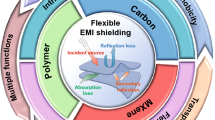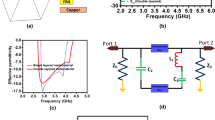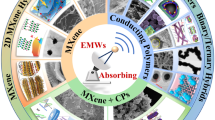Abstract
This work addresses the effective jamming style of projectile-carried communication for frequency hopping radio with different modulation by applying simulation verification via OPNET platform to construct the projectile-carried communication jamming system model. A general projectile-carried communication jamming style based on the signal combination of sweep saw-tooth wave and noise frequency modulation is proposed and analyzed. The network model of projectile-carried communication jamming system is constructed, and then the model building process of frequency hopping radio from the two aspects of transmitter model and receiver model is deeply elaborated. We demonstrate that the general projectile-carried communication jamming style has good jamming effect on the frequency hopping radio receivers with five modulation modes of 2FSK, 2PSK, 2DPSK, MSK and GMSK by comparing the simulation results, including receiving throughput, end-to-end delay, time delay of wireless channel access, delivery rate of synchronized header message, signal-to-noise ratio, bit error rate, packet loss rate, remaining power of jammer. Among them, the bit error rate of radio receiver with five modulation modes is more than 20%.






















Similar content being viewed by others
References
Fan Y (2007) Application prospect of electronic jamming projectile. Ship electrcountermeas 30(6):5–7
Jianfeng ZHAO, Guocheng WANG, Hu ZHANG (2006) Blinding weapon ininformation battlefield-communication jamming projectile. Nat Def 12(69):70
Yiwei Y, Dexiang W (1998) Bulgarian communication jamming projectile. Foreign Electr Warf 2:38–42
Mingliang S, Ge H (2003) Communication jamming projectile-special projectile for communication jamming. Mod Milit 1:39–40
Na Dantong, Zhao Weikang, (2013) Frequency hopping communication jamming and anti-jamming technology. National Defense Industry Press, (pp. 33–39)
Yao Fuqiang, (2012) Communication anti-jamming engineering and practice (2nd Edition Electronic Industry Press, (pp. 239–254)
cqukelly, (2018) “Development trend and strategic influence of electronic warfare,” Dec 2018. [Online] http://www.360doc.com/content/18/1210/11/11962033_800627886.shtml
Shesheng Xiaowei, (2018) “ report issued by US. electromagnetic defense Working Group,” Nov 2018. [Online https://mp.weixin.qq.com/s/nkgG_wpN-nn6WKmgAhwkzlA
Gao Yuan, (2016) “The development trend of anti-jamming technology capability of communication equipment in US Army,” Nov 2016. [Online]. http://www.360doc.com/content/16/111-5/10/30774303_606681164.shtml
q1338, “A summary of foreign advanced individual radio,” Nov 2016. [Online]. http://www.360doc.com/content/16/1105/15/30123241_604141051.shtml
Ke T, Tao D, Cunwei W (2009) Research on operational effectiveness of radio-communication jamming projectile. MilitAutom 28(7):63–65
Xinxing Li, Zheng Y, Kun D (2008) Operational effectiveness evaluation of artillery delivered expendable jammer. ElectrCountermeas 4:35–39
Yingchun H (2008) Design and simulation of optimal distribution coverage of suspension type communication jamming projectile. Firepower Command Control 33(8):65–68
Xinxing Li, Wei Z, Yuan Hu (2008) Spatial arrangement and wind drift correction computation of artillery-launched communication jammer. CommunCountermeas 2(44):48
Lixin X, Shanqing G, Xinming W (2007) Analysis of shooting characteristics of radio communication jamming projectiles. J Missil Guidance 27(4):157–159
Lu Zhongbao, (2004) “Optimum Design of Communication Jamming Projectile Structure,” Master dissertation, Nanjing University of Science&Technology, (pp. 1–20),
Tiangang Li, Liren L, Congjie G (2008) Research on artillery-launched suspende active communication jamming projectile. Ordnance IndAutom 27(8):9–11
Yundong P, Rongzhong L, Rui G (2012) Design of an automatic centralizer system for communication jamming projectile. J Missil Guidance 32(2):226–228
Yingchun H (2008) Data processing system for range test of communication jamming projectile. Firepower Command Control 33(1):137–140
Wang Jixiang, Han Hui, (2012) Objective evaluation of communication anti-jamming effect. National Defense Industry Press, (pp. 23–24)
Wang Yong, (2003) “ Anti-jamming Performance Analysis of FH /SS Electronic System,” Modern Electronic Technology, no. 17, pp. 9,
Chenxi W (2001) Communication anti-jamming technology and development direction. MilitCommunTechnol 22(2):31–32
Heng Li, Shiju Qi, Chengwen S (2011) Research on smart noise recognition and countermeasures technology. J Sichuan Ordnance 32(8):138–140
Tonghui D, Zhen W, Wenxiong C (2009) A practical structure of communication anti-jamming device based on software radio. J Sichuan Ordnance 30(4):64–65
Yang Xun, Zhanzhong Cui, Xinhong Hao, (2011) “Optimal parameters selection of noise FM jamming and its simulation,” in International Conference on Consumer Electronics, Communications and Networks (CECNet), pp. 2385–2389.
yunde113, “Chapter 1 of OPNET,” Dec 2014. [Online]. https://www.docin.com/p-9866259-14.html.
Mo Li, Liang Z (2017) Comprehensive experimental design of wireless network simulation based on OPNET. ExpTechnolManag 34(3):120–123
Jian W (2018) Modeling and simulation of large scale wireless sensor network based on OPNET. Comput Digit Eng 46(11):2305–2309
Lu Lingyun, Wang Yizhi, Chen Yating, (2017) “Wireless network experimental teaching research on collaborative simulation strategy of MATLAB and OPNET,” Computer Education, no. 7, pp. 61–64,
Yao Fuqiang, (2012) Communication anti-jamming engineering and Practice (2nd Edition) Electronic Industry Press, pp. 95
Crossing in a boat, “Overview of Short Wave Communication,” Feb 2017. [Online] https://wenku.baidu.com/view/f8d20b1beffdc8d376eeaeaad1f34693dbef1074.html
Peter Stavroulakis, (2003) Interference analysis and reduction for wireless systems. Artech House Press, (pp. 51–55)
Yao Fuqiang, (2012) Communication anti-jamming engineering and practice (2nd Edition). Electronic Industry Press, (pp. 77–78)
Jian Bo, (2011) “Improvement of Modulation and Synchronization scheme in frequency hopping system,” Master dissertation, Southwest Jiaotong University, pp. 24–25,
Jiang Enguang, (2013) “Design of frequency hopping communication system an synchronous acquisition research and simulation,” Master dissertation, Hangzho University of Electronic Science and Technology, pp. 35–42
Ren Hang, (2013) “Research on electromagnetic compatibility jamming prediction of frequency hopping communication system,” Master dissertation, Xi'an University of Electronic Science and Technology, pp. 29–46
Zhang Yimin, (2015) “Study on parameter estimation and jamming technology of frequency hopping communication signal,” Dec 2015. [Online]. https://www.docin.com/p-1397010276.html
Ju Yingjue, (2011) “Research and implementation of constant envelope modulation and demodulation technology,” Master dissertation, University of National Defense Science and Technology, pp. 5–12.
Fan Changxin, Zhang Fuyi, Xu Bingxiang, Wu Chengke, (2001) Communication principles. National Defense Industry Press, pp. 176–181
Chang L, Chen Q (2015) Analysis and research of digital modulation technology FSK and GMSK. China Cable Telev 4:491–494
Author information
Authors and Affiliations
Corresponding author
Ethics declarations
Conflict of interest
We all declare that we have no conflict of interest in this paper.
Additional information
Publisher's Note
Springer Nature remains neutral with regard to jurisdictional claims in published maps and institutional affiliations.
Rights and permissions
About this article
Cite this article
Lizhi, Q., Jie, Z., Quanli, N. et al. Research on effective jamming style of projectile-carried communication for FH communication radio under common modulation systems. Evol. Intel. 15, 2553–2565 (2022). https://doi.org/10.1007/s12065-021-00605-x
Received:
Revised:
Accepted:
Published:
Issue Date:
DOI: https://doi.org/10.1007/s12065-021-00605-x




